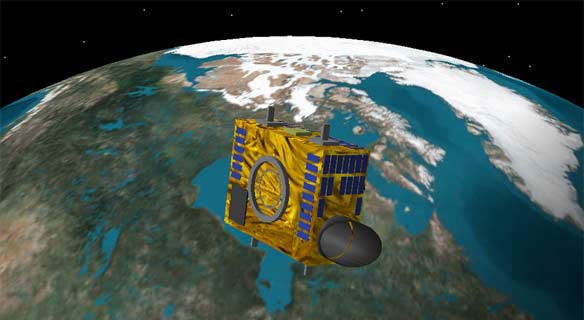A Polar Satellite Launch Vehicle (PSLV) successfully launched from India today, sending seven different international satellites into orbit. Launch was at 7:31 a.m. EST (12:31 UTC) and on board were three Canadian-built spacecraft including a small asteroid-hunting satellite (weighing in at just 74 kg) called NEOSSat, other small satellites from the UK, Austria and Denmark and an India-France joint effort called SARAL, an Earth observation satellite, the primary payload for the launch.
Reports indicate all seven satellites were placed in their proper orbits and after their initial check-outs will being their missions.
NEOSSat (Near-Earth Object Surveillance Satellite)will track large asteroids that may come close to Earth and also track space debris in orbit. The suitcase-sized NEOSSat will orbit approximately 800 kilometers above the Earth, searching for objects that are difficult to spot using ground-based telescopes. Because of its location, NEOSSat will not be limited by the day-night cycle and will operate continuously.
"NEOSSat will discover many asteroids much faster than can be done from the ground alone," said Alan Hildebrand of the University of Calgary. "Its most exciting result, however, will probably be discovering new targets for exploration by both manned and unmanned space missions."
SARAL will be monitoring climate on Earth; CanX-3 BRITE (BRIght Target Explorer) is billed as the smallest astronomical telescope looking for faint objects; Sapphire is a military satellite that will keep track of objects orbiting between 3,800 and 25,000 miles (6,000 and 40,000 kilometers) from Earth; TUGSat-1 BRITE from Austria will monitor changes in brightness in stars; AAUSat 3 from Denmark will moniter ship traffic on Earth's oceans, and STRaND-1 is a nanosatellite carrying a smartphone, has unique "
screaming in space"
experiment.
See more information on each satellite on our preview article.
 Universe Today
Universe Today
